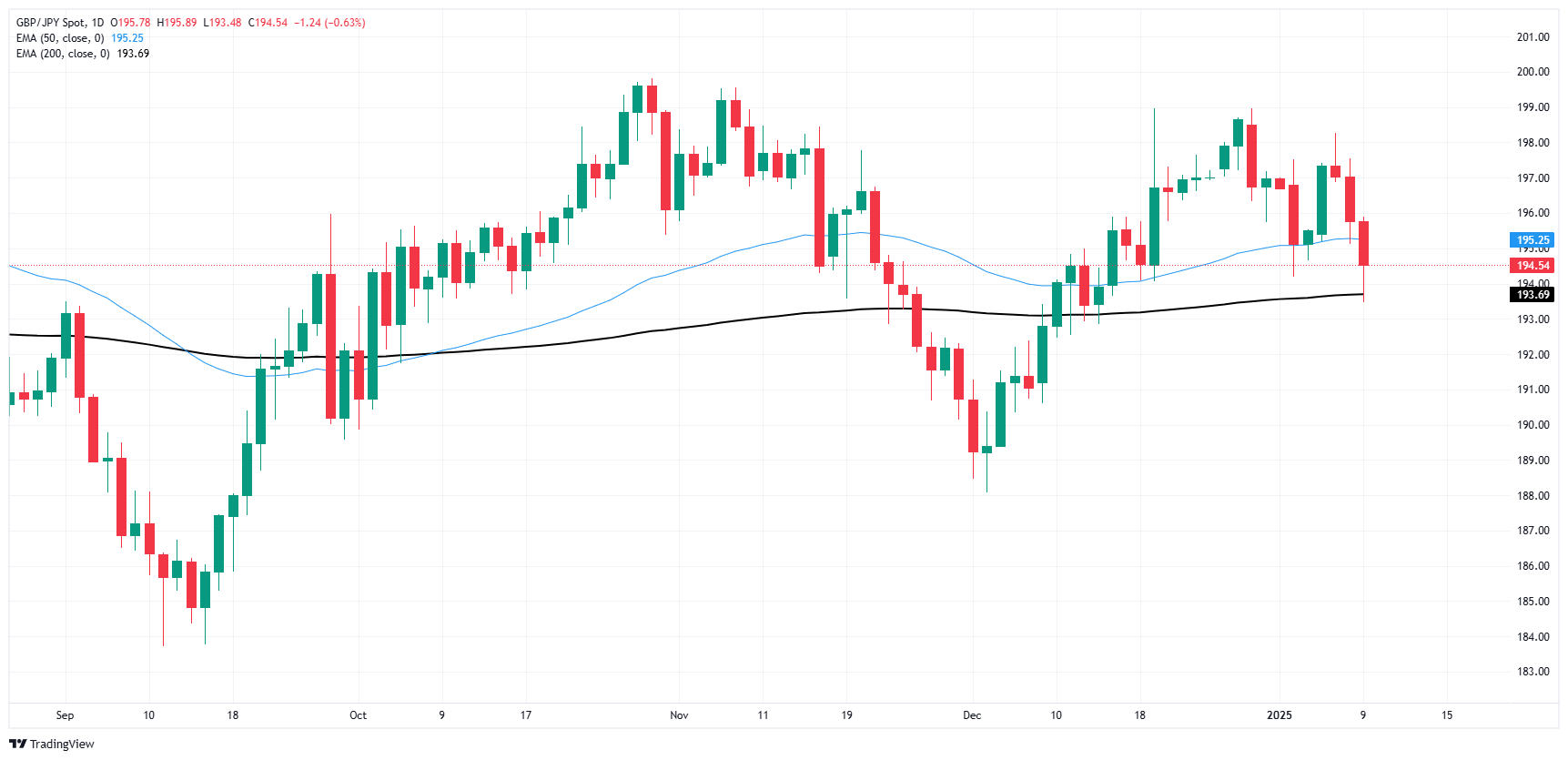GBP/JPY backslides on data-light Thursday
- GBP/JPY dumped another 0.6% and tested the 200 EMA on Thursday.
- Another limited showing on the economic calendar this week for the Guppy.
- Pound Sterling traders, take heart: UK inflation and consumer activity figures due next week.
GBP/JPY took another leg lower on Thursday, falling to it’s lowest prices in almost a month and coming within touch range of the 200-day Exponential Moving Average (EMA). Market sentiment has tilted to the cautious side this week, keeping the Guppy hobbled and drifting into the midrange.
BoE's Breeden: Some evidence of activity weakening, but we expect it to pick up again
Economic figures have been light on both sides of the currency pair this week, leaving policymaker speeches as the key driver for GBP/JPY traders to chew on. UK Chief Secretary to the Treasury Darren Jones spoke on Thursday, noting that UK financial markets continue to function in an “orderly way.” UK financial markets responded by promptly selling the Pound Sterling even further and stepping up their bets of further rate cuts from the Bank of England (BoE) throughout the year.
Yen traders have faced a borderline anemic economic calendar this week, and next week promises more of the same. On the other side of the Guppy, UK traders will have Consumer Price Index (CPI) inflation and Retail Sales figures to context with next week.
GBP/JPY price forecast
The Guppy’s backslide on Thursday saw the pair tap the 200-day EMA once again as the pair grinds into a medium-term consolidation pattern. Bidders will be looking to price in a near-term floor at the 200-day EMA near 193.50, while sellers will want to crack the key technical level and head for the last major swing low point near the 188.00 handle.
GBP/JPY daily chart
Pound Sterling FAQs
The Pound Sterling (GBP) is the oldest currency in the world (886 AD) and the official currency of the United Kingdom. It is the fourth most traded unit for foreign exchange (FX) in the world, accounting for 12% of all transactions, averaging $630 billion a day, according to 2022 data. Its key trading pairs are GBP/USD, also known as ‘Cable’, which accounts for 11% of FX, GBP/JPY, or the ‘Dragon’ as it is known by traders (3%), and EUR/GBP (2%). The Pound Sterling is issued by the Bank of England (BoE).
The single most important factor influencing the value of the Pound Sterling is monetary policy decided by the Bank of England. The BoE bases its decisions on whether it has achieved its primary goal of “price stability” – a steady inflation rate of around 2%. Its primary tool for achieving this is the adjustment of interest rates. When inflation is too high, the BoE will try to rein it in by raising interest rates, making it more expensive for people and businesses to access credit. This is generally positive for GBP, as higher interest rates make the UK a more attractive place for global investors to park their money. When inflation falls too low it is a sign economic growth is slowing. In this scenario, the BoE will consider lowering interest rates to cheapen credit so businesses will borrow more to invest in growth-generating projects.
Data releases gauge the health of the economy and can impact the value of the Pound Sterling. Indicators such as GDP, Manufacturing and Services PMIs, and employment can all influence the direction of the GBP. A strong economy is good for Sterling. Not only does it attract more foreign investment but it may encourage the BoE to put up interest rates, which will directly strengthen GBP. Otherwise, if economic data is weak, the Pound Sterling is likely to fall.
Another significant data release for the Pound Sterling is the Trade Balance. This indicator measures the difference between what a country earns from its exports and what it spends on imports over a given period. If a country produces highly sought-after exports, its currency will benefit purely from the extra demand created from foreign buyers seeking to purchase these goods. Therefore, a positive net Trade Balance strengthens a currency and vice versa for a negative balance.

